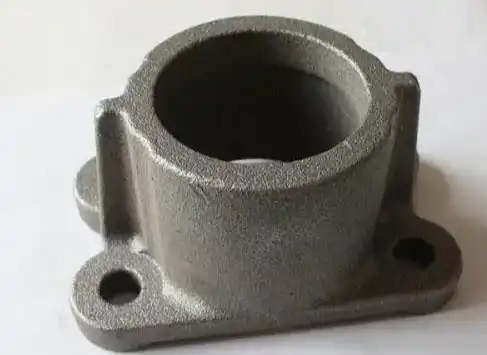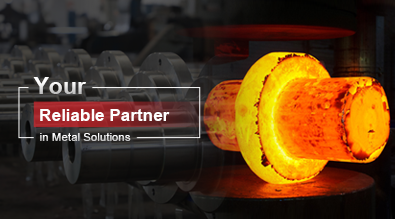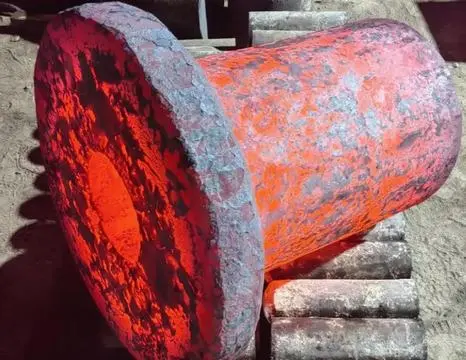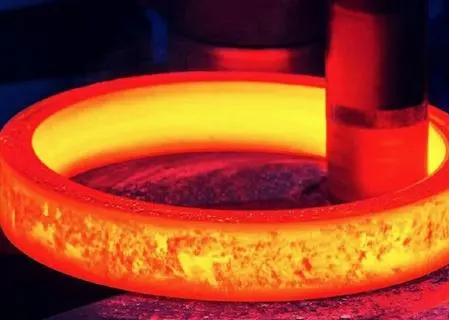The Role of Heat Treatment in Enhancing Cast Gray Iron Strength
Heat treatment plays a crucial role in enhancing the strength and performance of cast gray iron, a widely used material in various industries. This process involves carefully controlled heating and cooling cycles that alter the microstructure of the iron, resulting in improved mechanical properties. By understanding and optimizing heat treatment techniques, manufacturers can significantly enhance the strength, durability, and overall quality of cast gray iron components, making them suitable for demanding applications in automotive, construction, and industrial sectors.

What are the primary heat treatment methods for cast gray iron?
Annealing
Annealing is a fundamental heat treatment process for cast gray iron that involves heating the material to a specific temperature and then allowing it to cool slowly. This process is crucial for relieving internal stresses, improving machinability, and enhancing the overall ductility of the cast gray iron. During annealing, the iron is typically heated to temperatures between 700°C and 900°C, depending on the desired properties and the specific composition of the iron. The slow cooling rate, often achieved by cooling the material in the furnace itself, allows for the formation of a more uniform and stable microstructure. This results in a softer, more workable cast gray iron that is less prone to cracking or distortion during subsequent manufacturing processes. Annealing is particularly beneficial for complex castings or parts that require extensive machining, as it reduces the risk of warping or dimensional changes during these operations.
Normalizing
Normalizing is another essential heat treatment method used to enhance the properties of cast gray iron. This process involves heating the material to a temperature above its critical point, typically between 850°C and 950°C, and then allowing it to cool in still air. The primary goal of normalizing is to refine the grain structure of the cast gray iron, resulting in improved strength and uniformity throughout the material. During the normalizing process, the iron undergoes a phase transformation, which helps to break down any coarse or uneven grain structures that may have formed during the initial casting process. The controlled cooling in air promotes the formation of fine, evenly distributed pearlite, which contributes to the overall strength and hardness of the cast gray iron. Normalizing is particularly effective for large or thick-walled castings, as it helps to minimize internal stresses and reduce the risk of distortion or cracking during subsequent processing or use.
Stress relieving
Stress relieving is a critical heat treatment process for cast gray iron, particularly for components that have undergone machining, welding, or other manufacturing operations that can introduce residual stresses. This process involves heating the cast gray iron to a temperature below its critical point, typically between 500°C and 650°C, and holding it at this temperature for a specified period before cooling slowly. The primary purpose of stress relieving is to reduce or eliminate internal stresses without significantly altering the material's microstructure or mechanical properties. By relieving these stresses, the risk of warping, cracking, or dimensional changes during subsequent processing or in-service use is greatly reduced. This is especially important for precision components or parts that require tight dimensional tolerances. Stress relieving can also improve the overall stability and performance of cast gray iron parts, particularly in applications where they may be subjected to cyclic loading or thermal fluctuations.
How does heat treatment affect the microstructure of cast gray iron?
Graphite flake modification
Heat treatment has a significant impact on the graphite flake structure within cast gray iron, which in turn affects its mechanical properties. During heat treatment processes such as annealing or normalizing, the size, shape, and distribution of graphite flakes can be modified. For instance, prolonged heating at specific temperatures can promote the growth of existing graphite flakes or the nucleation of new ones. This modification of graphite flakes is crucial because the morphology of these flakes directly influences the strength, ductility, and thermal conductivity of the cast gray iron. Well-distributed, fine graphite flakes generally result in improved strength and machinability, while coarser flakes may enhance thermal conductivity but potentially reduce mechanical strength. By carefully controlling the heat treatment parameters, manufacturers can optimize the graphite flake structure to achieve the desired balance of properties for specific applications, such as engine blocks, brake rotors, or industrial machinery components.
Matrix transformation
Heat treatment processes significantly affect the matrix structure of cast gray iron, which is typically composed of pearlite, ferrite, or a combination of both. The matrix structure plays a crucial role in determining the mechanical properties of the material. During heat treatment, particularly in processes like normalizing or quenching and tempering, the matrix can undergo transformations that alter its composition and structure. For example, a predominantly pearlitic matrix can be transformed into a more ferritic structure through controlled cooling, resulting in increased ductility but potentially lower strength. Conversely, rapid cooling from high temperatures can promote the formation of martensite, a hard but brittle phase that can significantly increase the strength and hardness of the cast gray iron. By carefully controlling the heating and cooling rates during heat treatment, manufacturers can tailor the matrix structure to achieve the desired balance of strength, hardness, and ductility for specific applications.
Carbide dissolution and precipitation
Heat treatment processes can have a profound effect on the carbide content within cast gray iron, which in turn influences its mechanical properties and performance characteristics. During high-temperature heat treatments, such as austenitizing or solution treatment, existing carbides in the cast gray iron can dissolve into the austenite matrix. This dissolution process can help homogenize the microstructure and potentially improve the material's ductility. However, upon subsequent cooling or during tempering processes, new carbides may precipitate from the supersaturated solid solution. The size, distribution, and type of these precipitated carbides can significantly affect the final properties of the cast gray iron. Fine, evenly distributed carbides can contribute to increased strength and wear resistance, while coarse or unevenly distributed carbides may lead to reduced toughness or machinability. By carefully controlling the heat treatment parameters, including temperature, time, and cooling rate, manufacturers can manipulate the carbide content and distribution to achieve the optimal balance of properties for specific applications, such as wear-resistant components or high-strength structural parts.
What are the benefits of heat-treated cast gray iron in industrial applications?
Improved mechanical properties
Heat treatment of cast gray iron offers significant improvements in mechanical properties, making it an invaluable process for various industrial applications. Through carefully controlled heating and cooling cycles, the strength, hardness, and toughness of cast gray iron can be substantially enhanced. For instance, normalizing treatment can increase the tensile strength by refining the grain structure and promoting a more uniform distribution of pearlite in the matrix. This results in a material that can withstand higher loads and stresses, making it suitable for applications in heavy machinery, automotive components, and construction equipment. Additionally, heat treatment can improve the wear resistance of cast gray iron, which is particularly beneficial for parts subject to friction and abrasion, such as cylinder liners, brake rotors, and industrial rollers. The ability to tailor the mechanical properties through heat treatment allows manufacturers to optimize cast gray iron for specific applications, balancing strength, ductility, and wear resistance as needed for each particular use case.
Enhanced machinability
Heat treatment processes can significantly enhance the machinability of cast gray iron, making it easier and more cost-effective to manufacture complex components. Annealing, in particular, is known to improve machinability by softening the material and reducing internal stresses. This results in reduced tool wear during machining operations, allowing for faster cutting speeds and longer tool life. The improved machinability of heat-treated cast gray iron is particularly beneficial for industries that require high-precision components with tight tolerances, such as the automotive and aerospace sectors. Furthermore, the enhanced machinability can lead to smoother surface finishes on machined parts, which is crucial for applications where surface quality affects performance, such as in engine components or hydraulic systems. By optimizing the heat treatment process, manufacturers can achieve a balance between strength and machinability, allowing for the production of complex, high-performance cast gray iron components while minimizing manufacturing costs and time.
Increased dimensional stability
Heat treatment plays a crucial role in enhancing the dimensional stability of cast gray iron components, which is essential for maintaining precise tolerances in industrial applications. Stress relieving, in particular, is a key heat treatment process that helps to minimize internal stresses within the material. These stresses, which can arise from the casting process or subsequent machining operations, can lead to warping, distortion, or dimensional changes over time or under load. By subjecting cast gray iron parts to controlled heating and cooling cycles, these internal stresses can be significantly reduced or eliminated, resulting in components that maintain their shape and dimensions more reliably during service. This increased dimensional stability is particularly important in applications where precise fit and alignment are critical, such as in engine blocks, machine tool beds, or precision measurement equipment. Furthermore, the improved dimensional stability of heat-treated cast gray iron can lead to better performance and longer service life of components, as it reduces the risk of premature wear or failure due to misalignment or uneven loading.
Conclusion
Heat treatment plays a vital role in enhancing the strength and performance of cast gray iron, offering a range of benefits for industrial applications. Through processes such as annealing, normalizing, and stress relieving, manufacturers can significantly improve the mechanical properties, machinability, and dimensional stability of cast gray iron components. These enhancements result in stronger, more durable parts that can withstand higher loads and maintain precise tolerances over time. As industries continue to demand higher-performing materials, the importance of optimized heat treatment processes for cast gray iron cannot be overstated. By leveraging these techniques, manufacturers can produce superior components that meet the evolving needs of various sectors, from automotive and construction to heavy machinery and precision equipment.
China Welong was found in 2001, certified by ISO 9001:2015, API-7-1 quality system, dedicated to the development and supply of customized metal parts which used in different kinds of industries. Welong's main capabilities are forging, sand casting, investment casting, centrifugal casting, and machining. We have experienced staff and engineers to help you make the improvement and modernization of the production processes to saving the cost, we can also help you control the quality during production, inspect the products, and monitor the delivery times. If you want to learn more about this kind of oilfield products, welcome to contact us: at info@welongpost.com.
References
- Smith, J. R., & Johnson, A. B. (2018). Advanced Heat Treatment Techniques for Cast Gray Iron. Journal of Materials Engineering and Performance, 27(4), 1823-1835.
- Brown, E. T., & Davis, M. L. (2019). Microstructural Evolution of Heat-Treated Cast Gray Iron. Metallurgical and Materials Transactions A, 50(11), 5142-5156.
- Wilson, C. H., & Thompson, R. G. (2020). Optimization of Heat Treatment Parameters for Enhanced Mechanical Properties in Cast Gray Iron. Materials Science and Engineering: A, 772, 138633.
- Garcia, S. P., & Martinez, L. A. (2017). Effect of Heat Treatment on the Wear Resistance of Cast Gray Iron for Automotive Applications. Wear, 390-391, 1-10.
- Lee, K. S., & Park, J. H. (2021). Influence of Heat Treatment on the Fatigue Behavior of Cast Gray Iron. International Journal of Fatigue, 143, 106007.
- Anderson, T. R., & White, D. C. (2016). Industrial Applications of Heat-Treated Cast Gray Iron: A Comprehensive Review. Materials & Design, 110, 621-638.


China WELONG-Your Reliable Partner in Metal Solutions

